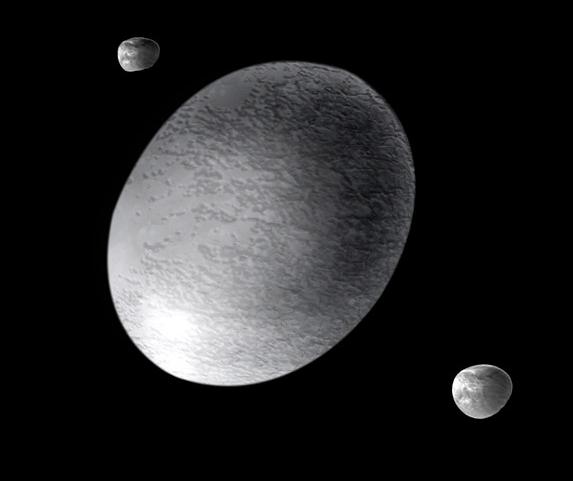Welcome to Haumea!

Let’s all give a big welcome to a newly named (but not newly discovered) dwarf planet orbiting the Sun out between 35 and 50 AU from the Sun. The new name is Haumea, given this week by the International Astronomical Union to honor the Hawaiian goddess of childbirth and fertility. In Hawaiian mythology, this goddess also represents the element of stone, which is very applicable to this dwarf planet. Observations of Haumea hint that this world is almost entirely composed of rock with a crust of pure ice — somewhat unusual for this region of the solar system.
Haumea is joined in its orbit by two satellites that are thought to have been created by impacts with other objects in the distant past, collisions that blasted parts of the surface away from Haumea. The debris likely re-coalesced to form the two moons. The first and largest moon is now named Hi’iaka, after the Hawaiian goddess who is said to have been born from the mouth of Haumea and the patron goddess of the island of Hawai’i. The second moon of Haumea is named Namaka, a water spirit who is said to have been born from Haumea’s body.

